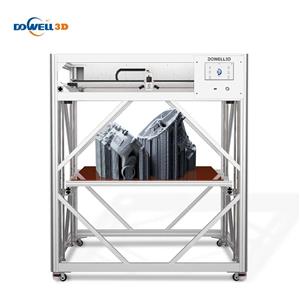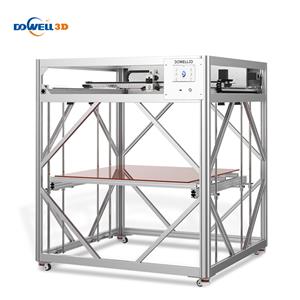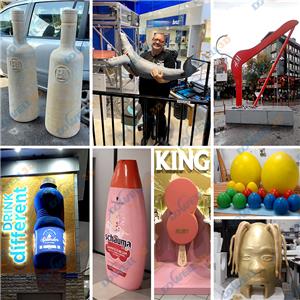-
What is the difference between a 3D printer FDM and a SLA?
3D Printing is also called additive manufacturing. It is a general technology that uses powdered metal or non-metal adhesive materials to construct objects based on digital model files by printing layer by layer. The 3D printer will slice the digital model, and then let the print head repeatedly lay the material on the printing plate according to the preset trajectory and merge the continuous material layers until the final three-dimensional model is formed. Fusion deposition technology (FDM, Fuse Deposition Modeling) and light curing technology (SLA, Stereolithography) are currently the two most common 3D printing technologies on the market. Because the two technologies have a long history of development, whether professionals or amateurs, they generally use these two technologies as entry options when they come into contact with 3D printers, so they are also the most mature of the current 3D printing technologies. Whether it is for prototyping, model display or general parts manufacturing, although both can print relatively similar parts for users, how to choose the most suitable 3D process and materials in the actual production process is still necessary Pay attention to many details. Let's compare the advantages and disadvantages of these two processes and under what circumstances they should be used. The working principle of the 3D printer of FDM technology is to extrude the molten thermoplastic onto the 3D printing platform, and lay it layer by layer in a layer-by-layer manner until the final 3D model is formed. There are many types of 3D printer materials using FDM technology, from the more common ABS, PLA to composite materials doped with a variety of enhanced powders, making the application fields of FDM 3D printers very wide. At the same time, due to the open source of FDM technology, enthusiasts can also customize the 3D printer, so that printing settings and hardware accessories can be changed according to different needs to meet the needs of more specialized scenarios. The SLA technology 3D printer uses a UV laser or light projector to continuously track each slice layer of the object, and cure the photosensitive resin layer into a hardened plastic until the final 3D model is formed.
25-12-2020 -
Large filament FDM 3D printed prosthesis production line promotes the development of barrier-free prosthetics
For people with disabilities, being home without a hand not only increases their dependence on others, but also affects their quality of life. Although the prosthesis is a good alternative, its high price will make them pay a high price, and the installation of the prosthesis also requires well-trained professionals. However, the use of 3D filament printer printing can make the cost of the prosthesis lower and the manufacturing speed faster.
26-03-2021 -
3D printer for car printing technology and application
Nowadays, 3D printing is widely used in automobile modeling, internal and external trim iteration and tooling testing, providing efficient solutions for all aspects of automobile development and manufacturing.
11-12-2020 -
FDM 3d printer printing furniture design
Nowadays large FDM 3D printing company uses carbon fiber materials to print carbon fiber tables and chairs. The black carbon fiber prints the furniture, which is stylish and elegant. The strength, chemical stability, and abrasion resistance of carbon fiber are very good, and the prints have a rough feel. 3D printing furniture, tables and chairs, provides designers with unlimited imagination space, let's introduce to everyone below.
16-07-2021 -
Large format 3d printing technology
3D printing or Additive manufacturing is a process of making a three-dimensional solid object of virtually any shape from a digital model. 3D printing is achieved using an additive process, where successive layers of material are laid down in different shapes. 3D printing is also considered distinct from traditional machining techniques, which mostly rely on the removal of material by methods such as cutting or drilling (subtractive processes).
15-01-2021





